When one thinks of Spain, global exploration/exploitation, Inquisition, Seve Ballesteros, bullfighting, Flamenco, football and Francisco Franco immediately come to mind. However, when we consider this short list of people, events, ideas and activities, it is clear Spain is an incredible nation with a history and culture as rich, diverse and complex as any in Europe. The period between the 1936 Elections to the death of Franco in 1975 seems unimaginable and is yet endlessly fascinating. I still find it difficult to grasp that Spain was under a dictatorship during my lifetime.
Equally profound was the Spanish Miracle which took place between 1959 and 1974. Tainted with the legacy of supporting the Axis powers in WWII and as a dictatorship, Spain was politically and economically isolated. The recovery of the Spanish economy seemed only a hopeful wish. However, with the signing of the Pact of Madrid, over one billion dollars was pumped into the Spanish economy during the 50s in return for permitting US military bases to be established. Wisely, much of this money was funnelled into public works, infrastructure, tourism and industry. The world has rarely seen economic growth such as this. The establishment of SEAT (Sociedad Española de Automóviles de Turismo) and rapid expansion of the car industry tells the reader all that is necessary. Just after WWII there were fewer than 100,000 privately owned vehicles in Spain. On the back of massive SEAT 600 sales, just twenty years later there were more than 1,000,000!
It may seem strange that the United States played such a major role in helping Spain to develop a free market economy. It may also seem strange that Franco would allow Casa del Campo to largely remain public after the seige of Madrid, despite ceding a parcel of land once used as a royal hunting estate to the Royal Equestrian Society (Real Sociedad Hipica Espanola). Casa del Campo encompasses nearly seven square miles and it is this park which houses the sprawling Club De Campo Villa de Madrid. It is thought that the ebb and flow of the Siege of Madrid’s front lines at one time ran quite near CCVM’s 8
th green on the Negro course! Indeed, the original course designed by PM Ross and T Simpson was badly damaged during the fighting and never rebuilt.
To place this club in perspective, the two golf courses are merely a slice of the many sporting delights on offer. There is also tennis, polo, equestrian, hockey and swimming. In all, the club operates close to 1000 acres and has a membership of 25,000! The land is mostly publicly owned by the city and used to be the home of the prestigious Real Sociedad Hipica Espanola Club de Campo. In the mid 1980s the city exercised its right to the land and hence CCVM was formed.
A highly skilled amateur golfer, Javier Arana was the first Spaniard to win a golf tournament abroad when he carried home the French Amateur trophy in 1934. Virtually unknown in the US and UK, Arana is without doubt Spain’s finest architect. It is unclear how a former Olympic sailor with no formal engineering or landscape training should enter the world of golf architecture; however, it is apparent that during the 1940s Tom Simpson and Arana developed a close professional relationship. Spanish golfers are very fortunate events unfolded as they did. The sum total of Arana’s output is eleven courses, which on the surface doesn’t strike one as prolific. Yet when we consider that maybe 21 courses were built in Spain during Arana's career, his production is remarkable. I would also add that among these eleven courses is El Saler, Arana’s consensus masterpiece located near Valencia.
Soon after the end of the Civil War, Arana planned the reconstruction of Club de Campo which wasn’t opened for play until 1956. There are two courses, the Arana designed Negro was the course which lured me away from the decidedly charming streets and plazas of Madrid. I imply that I was dragged from Madrid, but in truth CCVM is about five kilometres from Puerto del Sol, literally and figuratively the very heart of the city. It is quite easy to play a morning round and meet people in the city for lunch.
So far as I know, Arana's CCVM's is intact except for #s 15 & 18...not at all bad holes....in fact I quite like the 15th. CCVM is a fairly hilly property with, as one can imagine, commanding views of the city. Much of the elevation change is expertly controlled by severe drop shot drives at 1, 5 and 13; allowing for many uphill holes and approaches, but none which are too taxing. The opening drive heads toward the striking skyscappers of Madrid's Cuatro Torres Business Area. The open areas under the trees often make it easy to find balls, but recovery can be a handful. I found the vegetation and trees to be extremely attractive (and welcome relief from the oppressive 30+ degree heat), but in need of better tree managment.
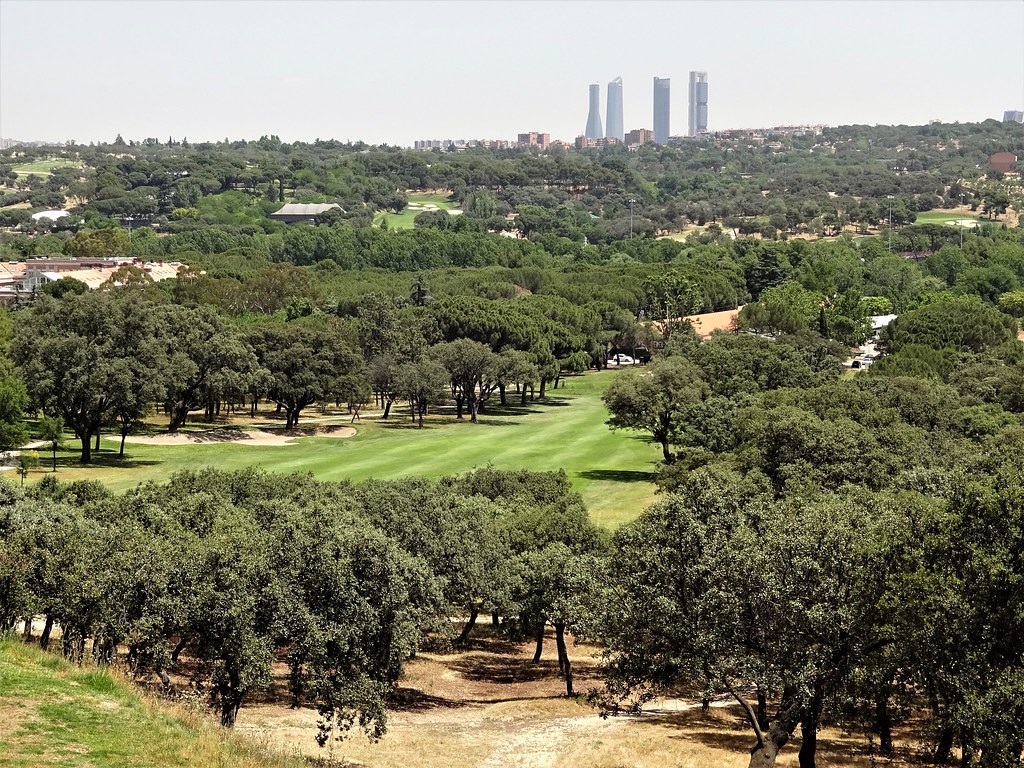
The flat second hole showcases some of the typical mounding found near many greens.
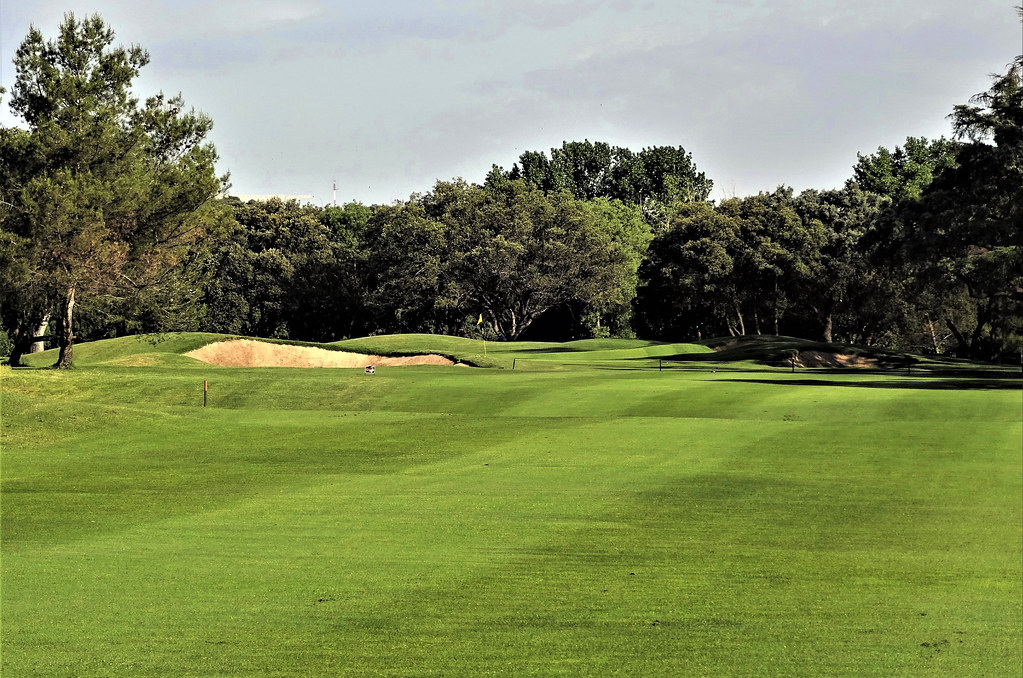
The short 3rd is fairly long with a demanding green site. In truth, CCVM is a fairly difficult course. It is not surprising the club hosted eight Spanish Opens and fourteen Madrid Opens. Seve Ballesteros must have particularly enjoyed CCVM. He won the Madrid Open three times and a sole Spanish Open victory which was Seve's final win. Seve was to have his last hoorah by captaining the winning 1997 Ryder Cup team. Anyone who saw those matches will not soon forget Seve's passion and determination. It could be no other way except a Seve victory on Spanish soil.
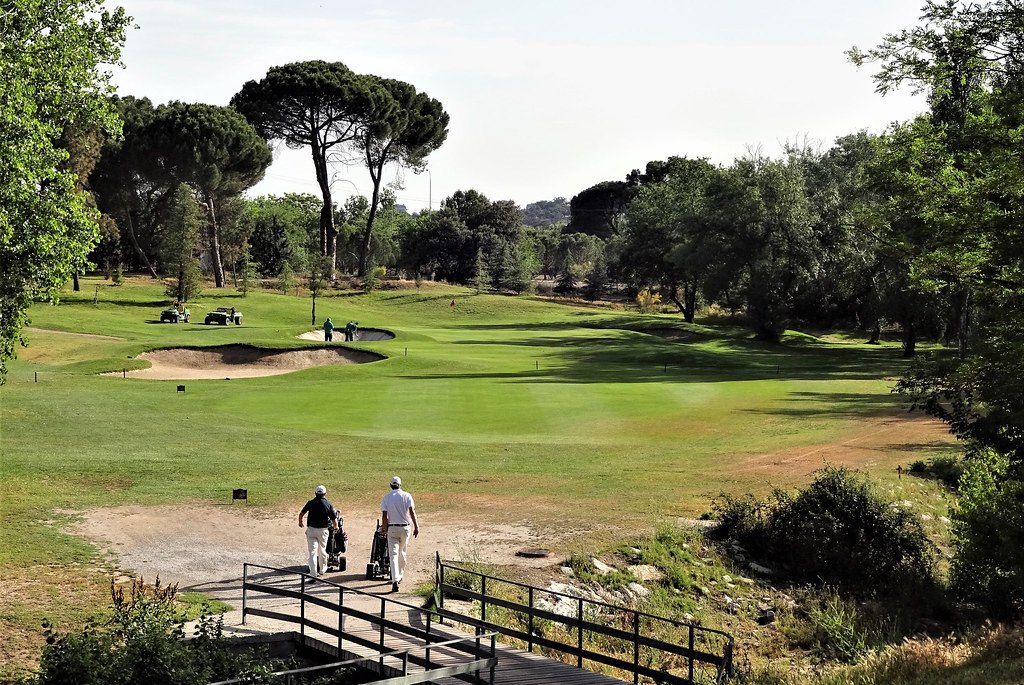
The first hole which really grabbed my attention is the three shot 4th. Playing uphill and turning right, a long drive is handsomely rewarded with a view of the green. For those unable to reach the crest of the hill, the blind second shot doesn't reveal the narrowed fairway. It is easy to leave the second shot in a large hollow which eats into the fairway.
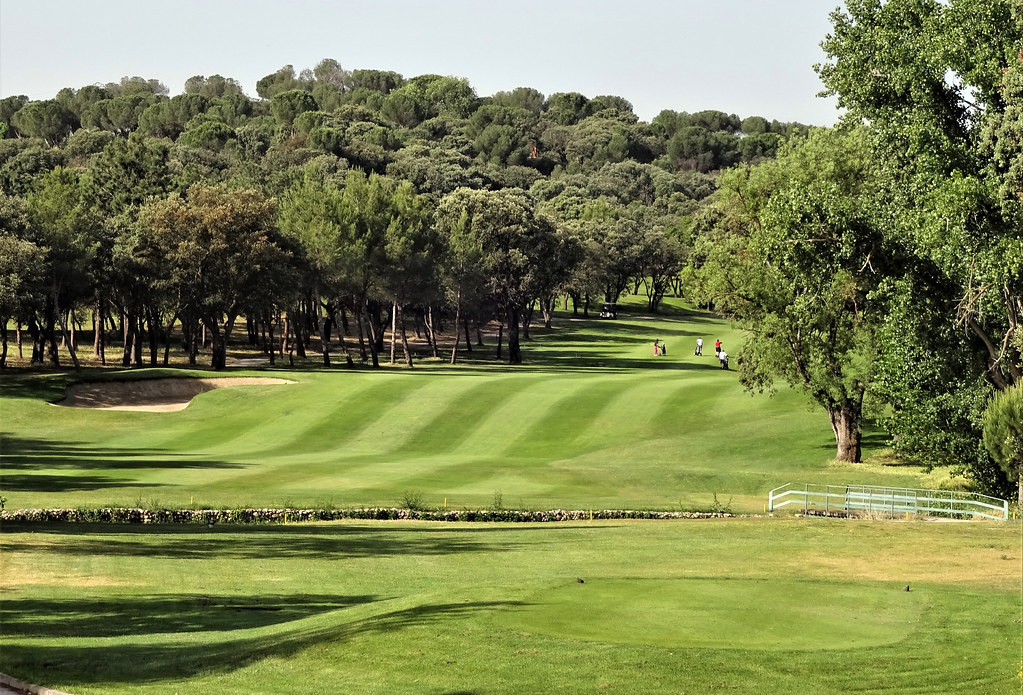
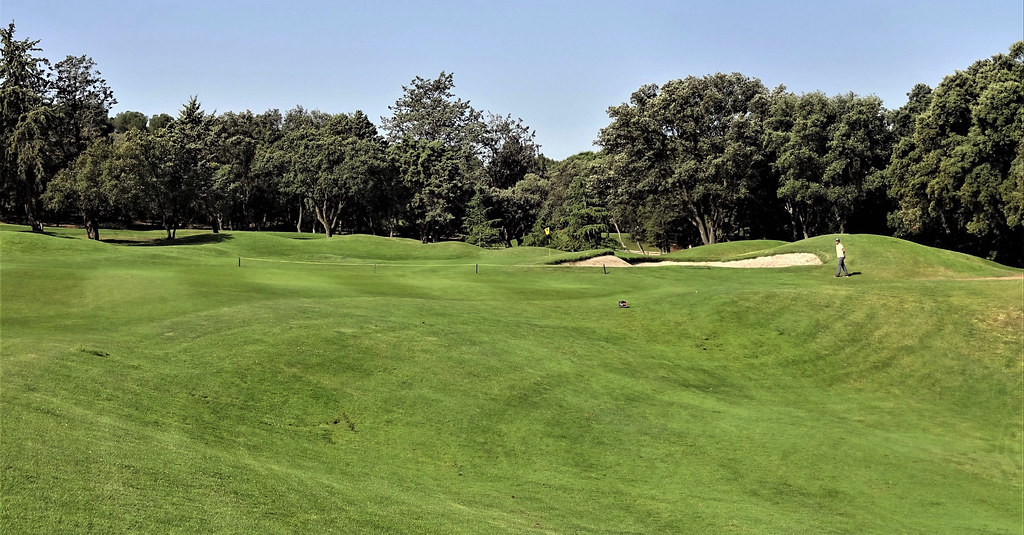
Madrid is at a surprisingly high elevation of 2000 feet with an extremely dry climate, as evidenced by the dry creek bed crossed on a handful of holes.
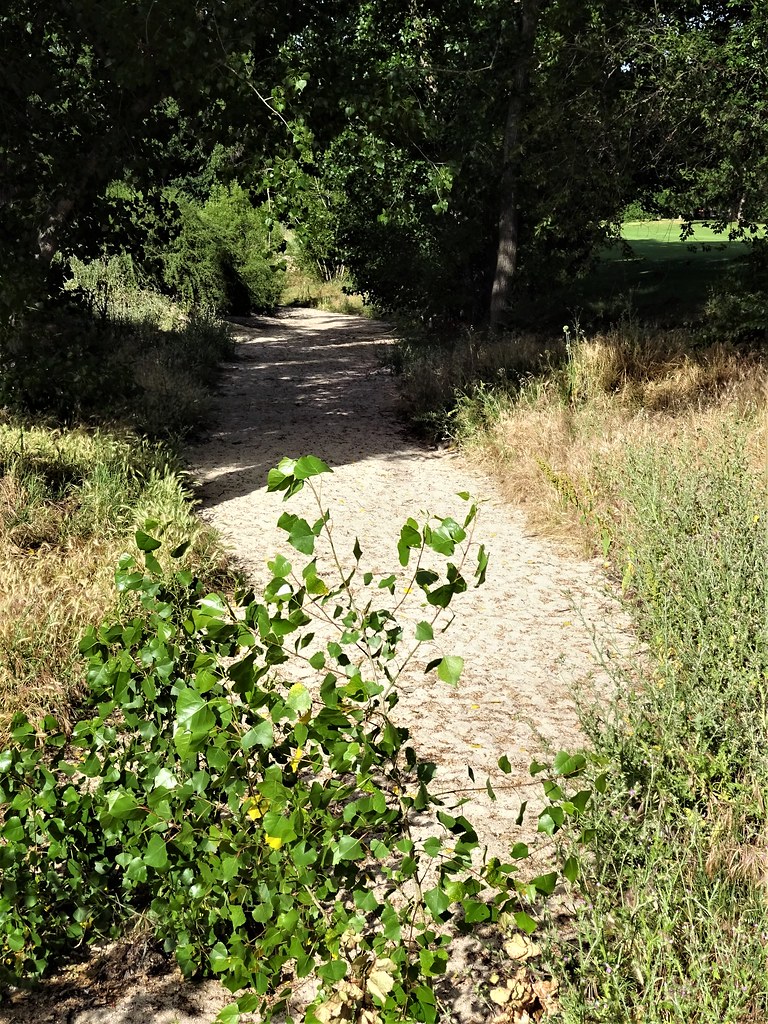
More to follow.
Ciao